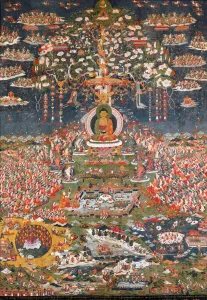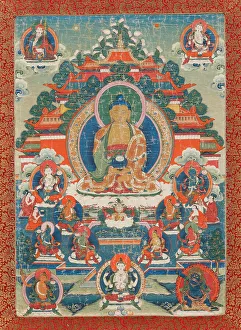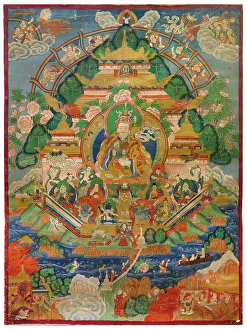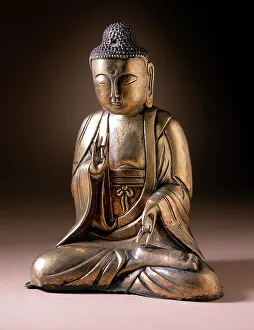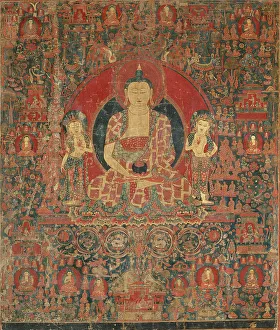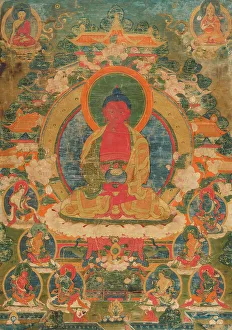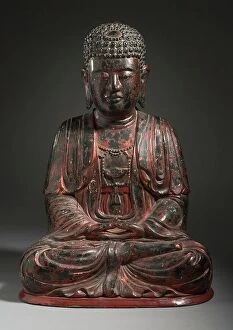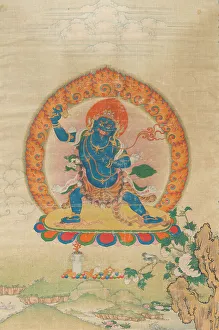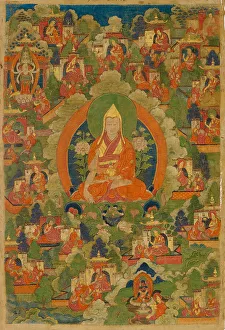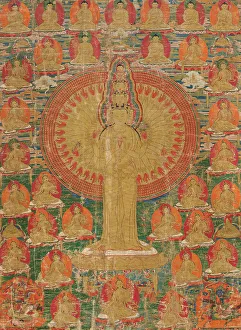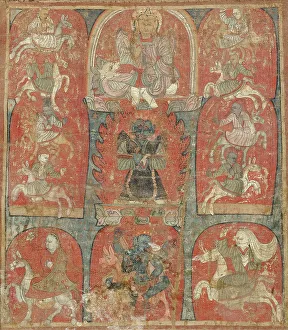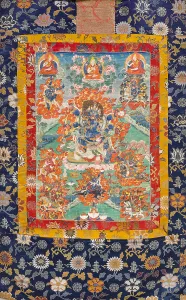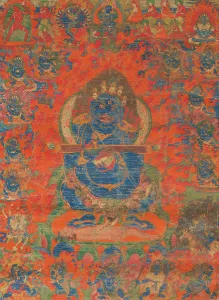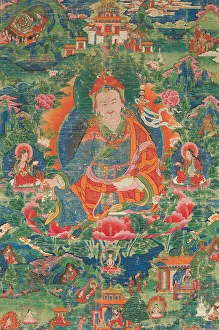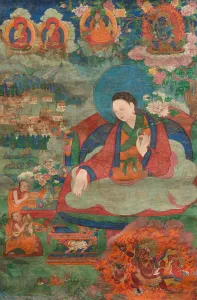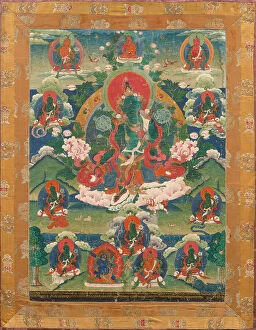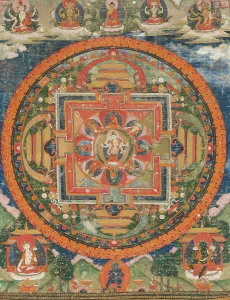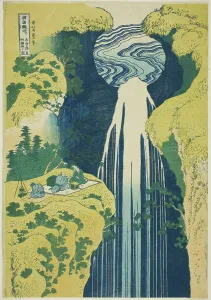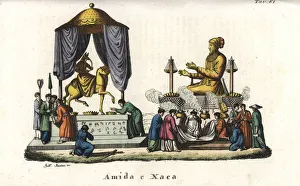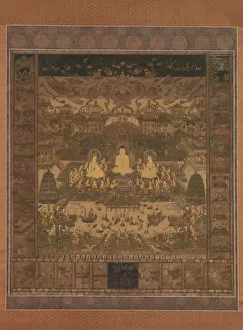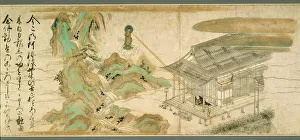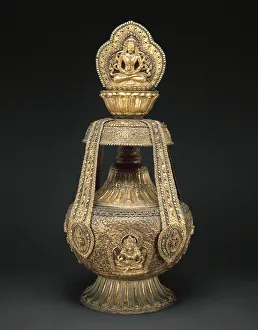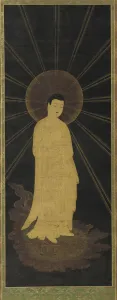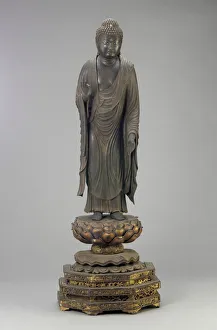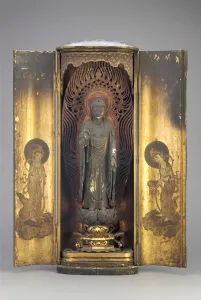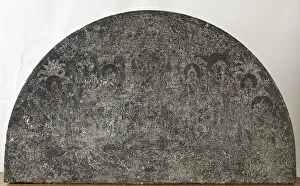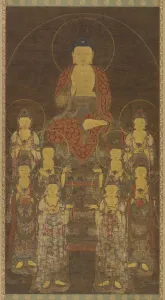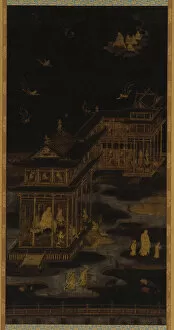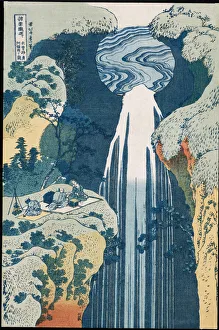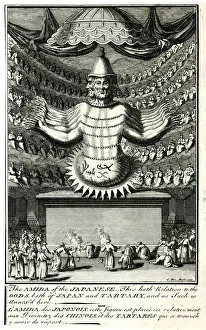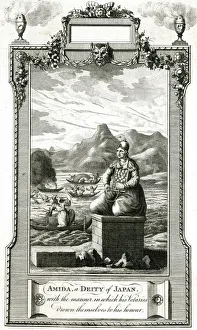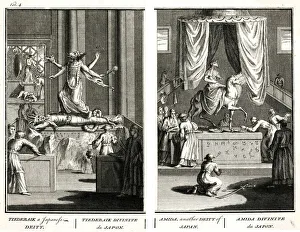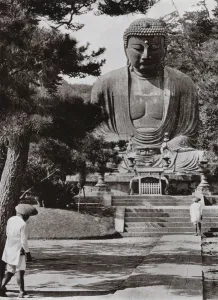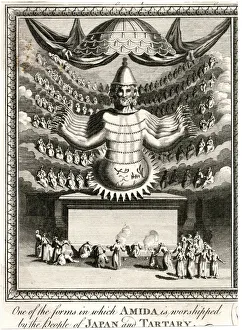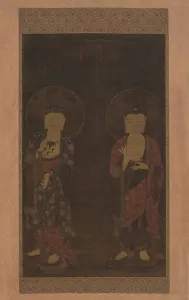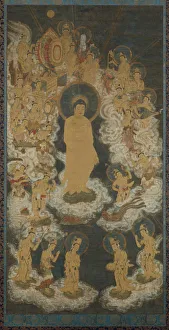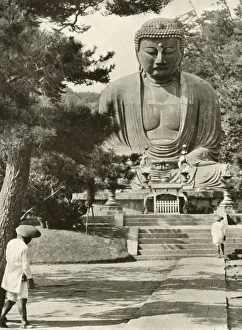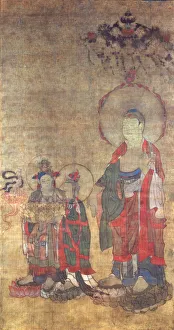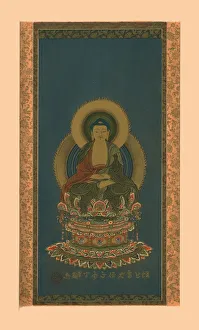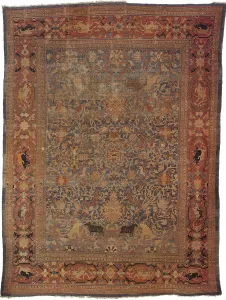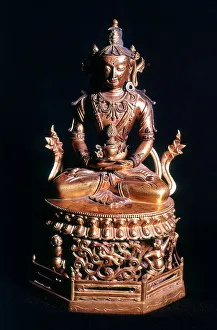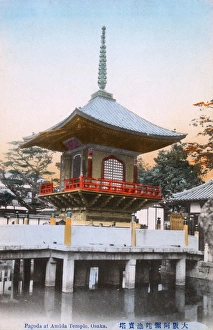Amida Collection
Amida, also known as Amitabha, is the revered Buddha of the Western Pure Land
All Professionally Made to Order for Quick Shipping
Amida, also known as Amitabha, is the revered Buddha of the Western Pure Land. This ancient deity has been depicted in various forms throughout history, showcasing the rich artistic heritage of Japan. One such portrayal is a stunning sculpture from around 1700. Created by an unknown artist, it captures the serene and compassionate nature of Amida. With closed eyes and a gentle smile, this Buddha invites devotees to seek enlightenment in Sukhavati, the Western Pure Land. In another artwork titled "The waterfall behind the Kiso Road, " created by Hokusai in 1832, we witness a breathtaking scene where nature intertwines with spirituality. The cascading water symbolizes purification and renewal on one's journey towards Amida's paradise. Japanese Shinto gods like Xaca or Shaka are often associated with Amida as well. Legends from the Yuzu Nembutsu Sect dating back to the 14th century depict these deities alongside each other, emphasizing their interconnectedness within Japanese religious beliefs. The influence extends beyond sculptures and paintings; it can be found even in everyday objects like vases. A beautiful example from the 17th century showcases a Vase of Longevity adorned with images of Buddha Amitabha. Such artifacts serve as reminders of devotion and faith in Amida's teachings. Throughout different periods in Japanese history - Kamakura period (13th century), Muromachi period (14th-15th century), Edo period (1615-1868) - artists continued to depict Amida's welcoming embrace for souls seeking paradise. These artworks capture not only religious significance but also reflect societal values during those times. Even older depictions exist; for instance, a Tang dynasty lintel possibly shows glimpses into Amitabha's Western Paradise—a testament to how far back reverence for this celestial realm dates. During Korea's Goryeo period, Amida was often depicted alongside the Eight Great Bodhisattvas.


